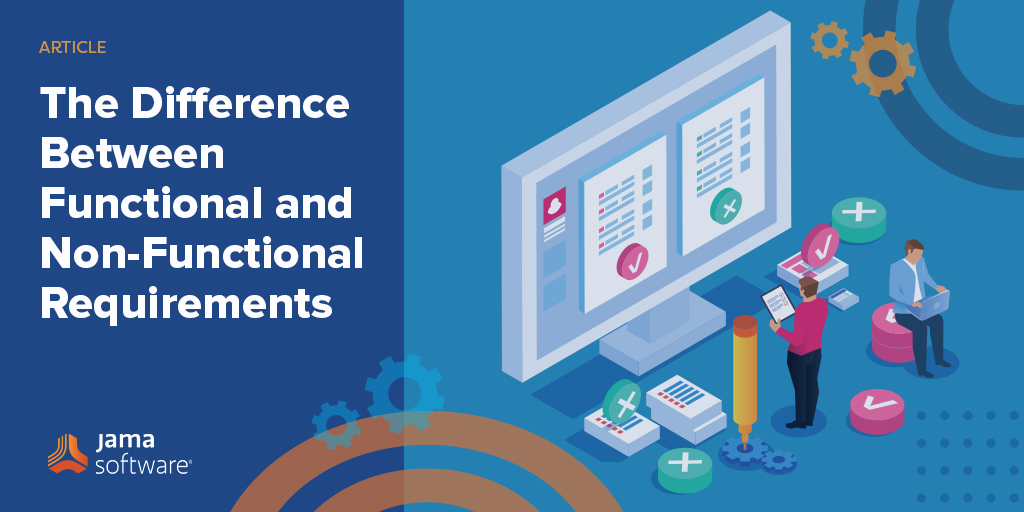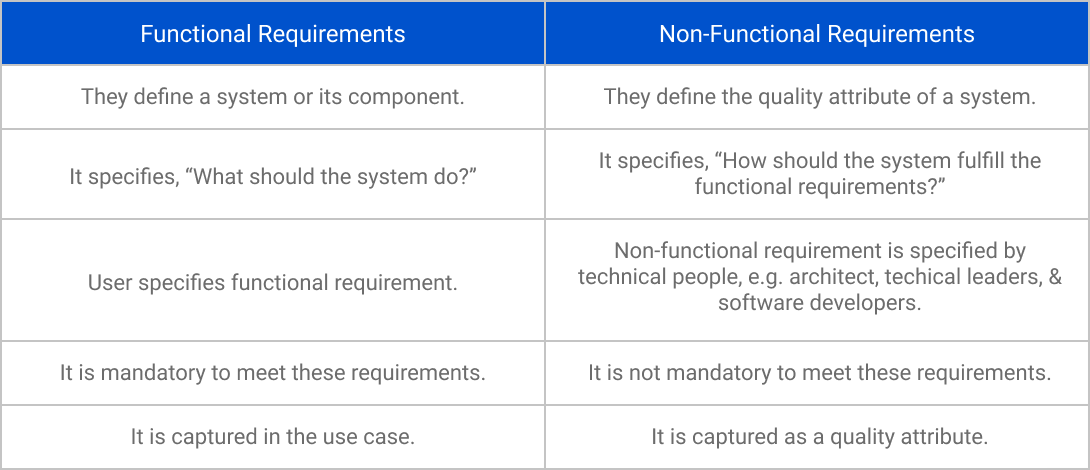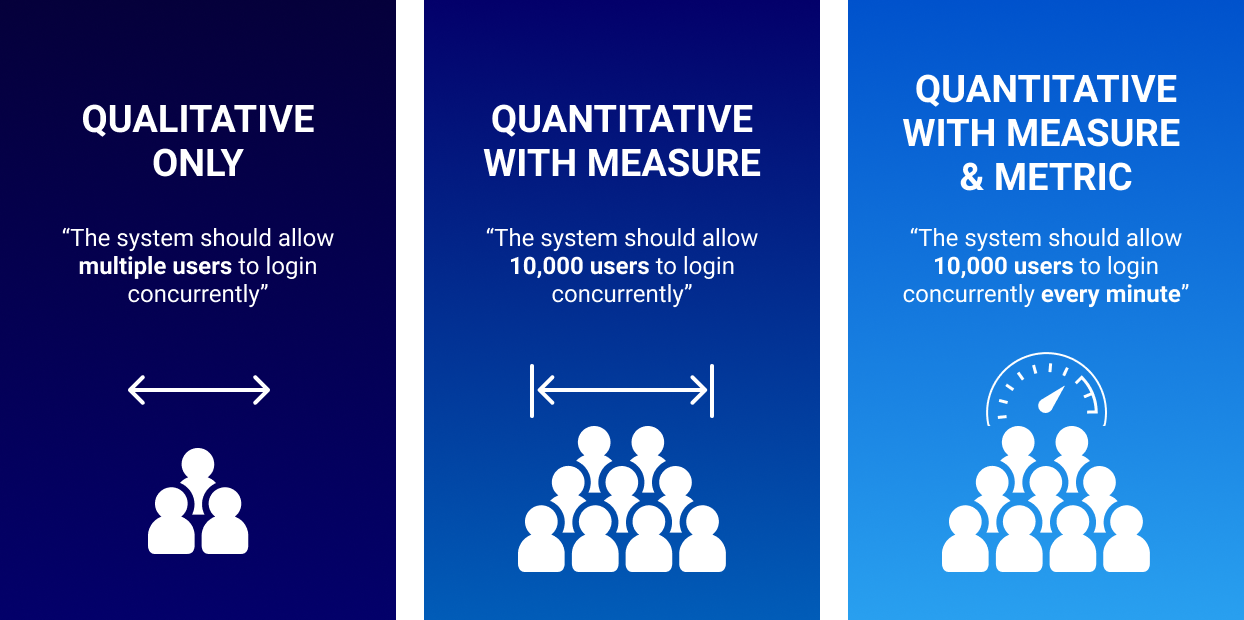If you’ve ever started a new project only for it to transform into a huge challenge later in the process, you know that upfront, clearly defined requirements are critical to success. Defining requirements upfront allows you to effectively manage client expectations and create an implementation process that is smooth and seamless.
A project that lacks this upfront clarity, however, can lead to a vaguely defined project scope and results that miss the mark. A study by the Carnegie Mellon Software Engineering Institute found that 60 percent to 80 percent of the cost of software development is in the rework. Furthermore, successful requirements management can eliminate 50 percent to 80 percent of project defects.
So, how can you ensure that your requirements are more accurately and clearly defined? It starts with understanding the key differences between functional and non-functional requirements and understanding the role that each plays in the success of your project.
Functional vs. nonfunctional requirements: What’s the difference?
Functional requirements focus on what the project should do, and non-functional requirements focus on how it should be. Let’s break it down a little further.
What are different uses cases of functional requirements and non-functional requirements?
What is a functional requirement?
Functional requirements focus on how the software must perform and specify the desired behavior of the system; for example, when specific conditions are met, the system will send a new user an email. Another example is that only employees on the management level can view salary data. More examples of functional requirements include those related to the following:
- Audit tracking
- Reporting requirements
- Authorization levels
- Legal or regulatory requirements
- Business rules
- Administrative functions
- Certification requirements
- Reporting requirements
- External interfaces
RELATED POST: How to Perform Better Impact Analysis on Upstream and Downstream Relationships
What is a non-functional requirement?
Non-functional requirements are critical to the usability of a software system, and if you don’t define them carefully, the end users’ experience can be adversely affected. An example of non-functional requirements is defining how fast a website must load or specifying that a website must handle 10 million users without having any performance challenges. Non-functional requirements can also be related to security; for example, a user must change their initial login password upon logging in the first time. More examples include those related to:
- Compliance
- Documentation
- Privacy
- Portability
- Quality
- Reliability
- Resilience
- Response time
- Scalability
- Stability
Non-functional requirements are focused on the system’s operation rather than its behaviors; for example, data must be updated for users during access within three seconds. Non-functional requirements can also be defined by metrics and relate to aspects of the system that evolve over time, such as manageability or documentation.
Attributes of Functions vs Nonfunctional Requirements
When comparing functional vs. non functional requirements, consider that a functional requirement might ensure the system loads a specific web page when the user clicks on a button. The non-functional requirement might dictate how fast the site loads. A website that loads slowly can adversely affect the user experience, which is why non-functional requirements are critical.
RELATED POST: 8 Do’s and Don’ts for Writing Requirements
What are user stories and how do they help?
When considering requirements and defining those requirements, you’ll find it helpful to consider integrating user stories. A user story is basically the description of a software feature from the user’s perspective. The story defines what you want the system to do and how that affects the overall experience. A basic formula might look like the following:
- A <define user type> wants <specify the specific goal> so that <include a specific reason>
Acceptance criteria should also be included with user stories, which are the conditions the product needs to address to be acceptable to the client. Create at least one acceptance criterion for each user story. A few examples may include:
- A search field needs to be placed on the top bar of the website
- A search is started once the user hits the “submit” button
- The display language is English
- No more than 150 characters can be typed into the search box
User stories are helpful in the context of non-functional requirements, as they allow you to take a deeper dive into the user experience and see how to make that process smoother.
Why are metrics used more in nonfunctional vs. functional requirements?
Non-functional requirements help companies measure the success of a system, so they must be measurable. The metrics must be qualitative and quantitative. You might require, for example, that a system be able to handle expansion in the future. That’s a qualitative goal, but let’s take it a step further and make it quantitative as well. You might require that the system handle at least 30,000 users within the next three years.
The benefit of focusing on quantitative goals is that the goal is easily measured and you and the client can agree on what success looks like.
RELATED POST: Checklist: Selecting a Requirements Management Tool
What are requirement specifications? What is a requirements specification document?
A software requirements specification document, also known as an SRS document, addresses what the software will do and expectations with regard to its performance. The document also highlights what the product needs in terms of user functionality. Most documents include an overarching purpose and define functional and non-functional requirements. A few sections that you may want to include in your SRS document include:
- Include a brief overview of the system, along with any relevant background details and terms that need definition upfront.
- Overall description. Include any assumptions made about the project, its business values, and the overarching project vision.
- Specific requirements. Define specific attributes to be included in the system, functional requirements, and any relevant database requirements.
If you want to view an example of an SRS document, Michigan State University has one that can give you a starting point for creating your own document.
Tracking Requirements: Why Traditional Documents May Miss the Mark
Traceability is critical to project success. Gartner highlights one of the main reasons why companies struggle to achieve the benefits of traceability:
“The most widely adopted tools for requirements continue to be general document software such as Microsoft Office or Google Docs (40% to 50% of the market) due to cost, availability, and familiarity. Yet these often lead to poorly managed requirements, thus eliminating and exceeding any cost benefit the tools themselves have. Requirements end up captured in a variety of documents and spreadsheets supplemented by post-it notes in unmanaged versions with no traceability or reuse. This creates a more costly user acceptance testing cycle, both in the time to execute as well as remediation of issues found late in the process, where they are far more costly to address.” – Gartner Research
Software and hardware teams must work together and collaborate throughout the development process to define market requirements, functional vs. non functional requirements, test cases, and other critical pieces of information. This becomes a challenge, however, when teams use different tools and terminology and work with different methodologies.
The answer is to connect data, conversations, and decisions in a single system in the product development process. This gives you the ability to consult and collaborate with people about requirements within the system, capture decisions and actions, and keep that information associated with the requirement. Down the road, if you need to revisit decisions, all data is stored and easy to find.
Moving Forward with Functional vs. Nonfunctional Requirements
Every software project has a vision, a goal, and a destination that you want to reach. Functional and non-functional requirements help you to reach that goal more easily through setting clear boundaries. These requirements help you answer the most critical questions and ensure that products are developed with success in mind.
Functional requirements vs. non functional requirements are critically important, but since non-functional goals are focused heavily on the user experience, these are arguably more critical. Understanding the role of each category empowers you to define and track each with greater success and create a road map that delivers on your client’s expectations.
Learn more about how Jama Connect streamlines tracking and tracing requirements.
- Automotive Industry Signs Memorandum of Understanding - July 15, 2025
- Construction’s Next Leap: AI as a Strategic Partner - June 26, 2025
- Strategies for Addressing More Complex Custom Chip Design - May 1, 2025



